How to Care for Garden Wildlife this Winter
It’s getting to that time of the year again...
The temperature is dropping and you may be spending less time in your garden than a month or two ago. In fact, if you are anything like me you’re finding it so hard to get out of bed in the morning that you are practically hibernating!
But for many animals your outside space remains a haven. Not just cute creatures to look at, the birds, hedgehogs, bugs and frogs that call your garden home are an excellent source of natural pest control and supporting garden animals during winter will keep them coming back to your garden.
Here at The Worm That Turned, we have curated some top tips, as well as a few of our best products to help your garden animals this winter.
Helping Birds Survive Winter:
High Fat Foods
Birds need feeding all year round. But this is especially important over the cold winter months as they need to put on more weight to insulate themselves against the cold. Therefore, as well as the usual bird seed you might put out, they can really benefit from foods with a high fat content.
If you want something they will really enjoy (and we mean really enjoy), then we have a selection of peanut butters for birds that they won’t be able to get enough of. This saves you the time consuming (and often gross) task of melting down suets.

Snug Bird Boxes
You can also give them a home over Christmas with a snug nesting box. Although nesting usually starts in Spring, providing a safe space for your winged friends will protect them from harsh weather.
We have a seasonal wreath nester that does an excellent job of protecting birds because of its off-centre hole which offers increased protection from freezing winds. It can also be decorated with a seasonal garland to become a beautiful addition to your garden.
Ideally, they should be placed between two and five metres above the ground to keep the birds out of reach of predators and should face between northeast and south east to avoid facing the sun and westerly winds.

Helping Hedgehogs Survive Winter:
Provide a comfy shelter
Dedicated hedgehog homes are safer than compost heaps because you don’t run the risk of harming the hedgehogs accidentally.
For hedgehogs, the period of hibernation over winter starts roughly around October. What they need for this is a warm, secure home in which to do this. We have a range of hedgehog homes available on our website, including our cosy Hedgehog Igloo, which has a water-proof roof and a small tunnel entrance to deter prowling predators or curious dogs.

You can protect hedgehogs from the cold by padding their home with dry grass for extra bedding and leaves and additional brushwood.
Contact Your Local Wildlife Helpline
Hedgehogs may have litters as late as September. If the hoglets don’t reach 450 grams by the hibernation period, it is unlikely they will survive the winter. If you find a poorly baby hedgehog, call your local wildlife rehabilitation centre as soon as possible, they will be best placed to help the little hoglet stay safe and healthy. Find your local rehabilitator.
The British Wildlife Rehabilitation Council has a guideline of ethics regarding the rehabilitation of wild animals. They are wary of interfering with the process of natural selection that has helped wild animals survive the way they have. They also raise a number of factors that they take on a case-by-case basis over the rehabilitation of an animal.
Helping Frogs Survive Winter
Provide a safe space
For most of the year, frogs can be found in little groups bathing in the corners of your pond, peering up at you. But during winter, when the night temperatures are so cold that your pond starts to freeze, what do they do?
They usually try to find somewhere warm and moist to hibernate, often a compost heap is ideal. But you can run the risk of hurting them when you disturb it, and if you do not have a compost heap, they may be more at risk. To help them, we have the Frogilo Frog House. Kept near the pond, or in a dark corner of the garden, the house will provide a luxury home that stays cool and damp - perfect for the winter.
Additionally, you can also help frogs and toads survive the cold weather by building piles of logs and leaf litter. They are damp and sheltered, as well as attracting the prey your amphibians will usually feast on.

Muddy up your pond
Some frogs will hibernate at the bottom of your pond, surviving on the oxygen produced by your pond plants photosynthesis. Ensuring that light can get to the bottom of your pond will help them survive and adding soil to your pond will give your frogs the material they need to bury themselves.
Helping Bees and Bugs Survive Winter
Create an insect hotel
Insects are vital for the health of your garden’s ecosystem and for your organic produce. During the winter, they typically hide in whatever cracks and crevices they can find, but you can help keep them safe in your garden by providing them a home.
Our Ladybird and Insect Tower is a sturdy, unintrusive addition to any garden. It has many holes drilled at an upward angle to protect bugs from the wind, and its durable timber materials mean you do not need to spray it with preservatives. If you prefer a more natural approach, then making sure your garden has lots of sheltered nooks and crannies for bugs to exploit will give them the protection that they need to survive in the winter.

How to protect bees
The other main insect people want to attract to their garden are bees. As per the NRDC, bees are attracted by filling your garden with a variety of plants of different sizes and colours the bloom throughout the year. The NRDC also also recommend native plants to match local pollinators and having shallow pools during dry spells of dry weather.
Once bees have established themselves in your garden, they may need help surviving there over the winter. One of the primary threats they face in winter is heavy rain, for this we have a collection of bee shelters that you can install on a wall or on the ground. As well as this we have bamboo nesting tubes that can be inserted into logs or cracks to provide a snug home for your bees over the cold season. As well as preserving bees against the rain, these shelters give them a safe place to nest out of the reach of birds. For further tips to keep your bee community safe over winter, we recommend reading this article from the Wildlife Community which gives some excellent advice.

If bringing wildlife to your garden is something you are passionate about, then view our full range of products designed to protect and help garden wildlife thrive.
- choosing a selection results in a full page refresh
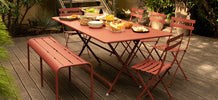


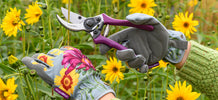



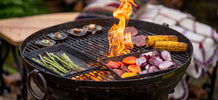


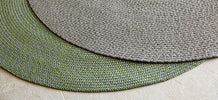
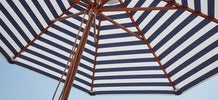

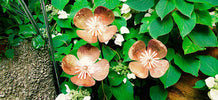










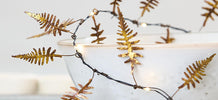









Comments
Follow Us
Previous Posts
Creating fat cakes for garden birds - Angela's recipe
Around the Fire: Trust, Betrayal and a Flame That Won’t Go Out
Fermob Trends 2025 - Precious Nature
12 Luxurious Garden Gift Themes
Garden Gifts to make their Christmas Special
Repotting Large Outdoor Plants: What You Need to Know
Fermob Trends 2025 - Ocean Wave
The Oxfordshire Gardener - February 2025
Nottingham Street Artist Soz Mate Brings Colour to Derby Street